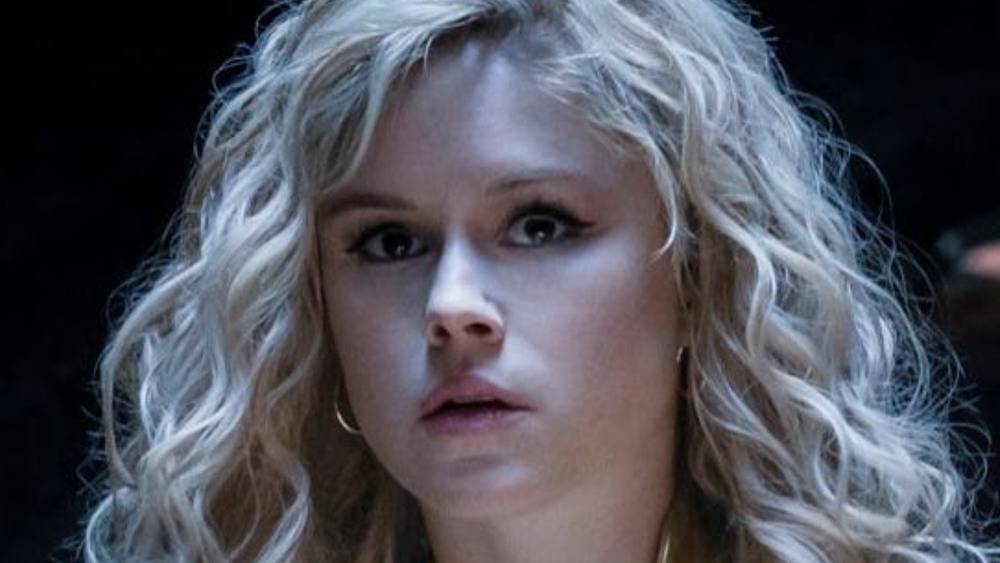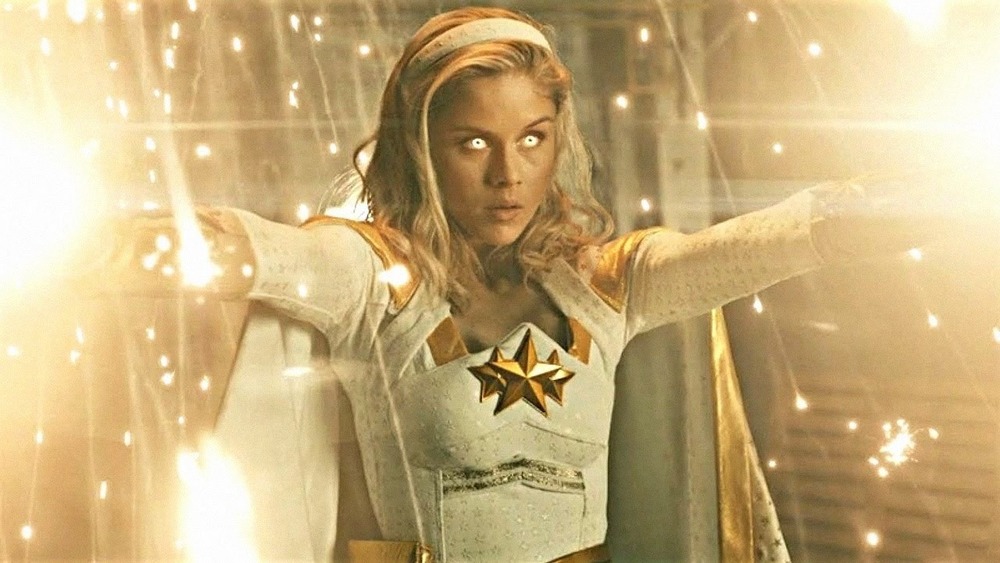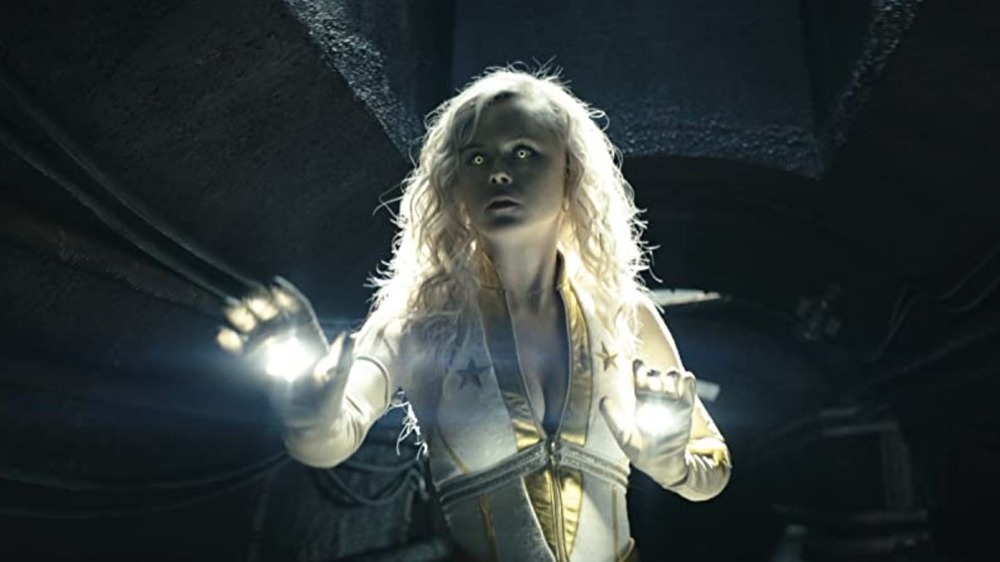The Boys: The Most Devastating Use Of Starlight's Powers Explained
The superpowers on Amazon Prime's The Boys range from relatively traditional super speedsters and shapeshifters to laser-shooting babies and Victoria Neuman's awesome power. As for who the strongest "supe" in the show is, it's fairly easy to rank the ones with traditional powers. For instance, Antony Starr's Homelander has Superman-style powers that make him a viable candidate for the greatest threat on the show, and The Boys certainly depicts him as such. Meanwhile, The Deep's (Chace Crawford) aquatic powers leave something to be desired on dry ground. But what about someone like Annie "Starlight" January (Erin Moriarty), who absorbs electricity and turns it into bioluminescence and blasts of intense light? How can you even begin to figure out how strong a power like that is?
In order to understand the true potential of Starlight's powers, Looper reached out to Dr. Jed Macosko, Ph.D. and Professor of Physics at Wake Forest University, who told us that The Boys has barely scratched Ms. January's true potential. Here's the most devastating use of Starlight's powers explained.
Starlight could take out an entire city with her powers
Though Starlight's ability to convert electricity to blasts of bright light might seem like little more than a bunch of pretty fireworks, Dr. Macosko makes it clear that the character has the potential to be one of the strongest superheroes in The Boys' universe. "Starlight's electricity-in-light-out ability would appear to have enormous power, according to the laws of physics," he explains. "That's because nearly everything has electricity. Even if Starlight could only harness electric current (as opposed to the electric potential stored in a battery, or the static electric field of a charged particle) there are huge reserves of untapped electric currents inside each atom."
While Dr. Macosko doesn't believe Starlight knows how to tap into atomic-level currents quite yet, her potential is still absolutely devastating and could possibly take out an entire city if used creatively. "Now, it doesn't seem that Starlight has figured out how to harness these electric currents, otherwise her powers wouldn't have been rendered useless when placed in a Faraday cage," he says. "So, given what she has figured out how to do, the most devastating use of her power would be if she went to a rock concert or other large gathering where people are all looking toward a central stage that has plenty of live electrical circuits wired into it. Once positioned at the center of the onlooking crowd, she would siphon the electricity from the live circuits and convert it to a powerful blast of light (a few well-placed mirrors would help spread the light in all directions). This would permanently blind the crowds, which could incapacitate an entire city."
Starlight's full potential is terrifying
Apart from Starlight's nasty crowd-blinding capacity, Dr. Macosko believes that her fully charged powers could be incredibly devastating. "Another possibility is just for Starlight to spend time at a power plant and completely saturate her ability to store electric power," he tells us. "There's no indication about how much energy she could store, so one could assume this value might be equivalent to the amount of energy stored in the 'business end' of an atomic bomb that weighs as much as Starlight herself." This, he says, could be intensely destructive, as "a modern warhead has only 2 or so kilograms of plutonium that undergoes fission to create 20 kilotons of TNT-equivalent explosive energy (8.37 x 10^13 joules). And on the fusion side, the kilogram-to-TNT-equivalent is about double that."
In other words, a 4.4-pound warhead would create the kind of boom you'd expect from an atomic bomb. However, if Starlight decided to take the time to charge herself up to the max, she would be considerably more powerful, because she has more mass.
"The best place for Starlight to fuel up her electric storage would be the Three Gorges Dam, which has an installed power production capacity of 22,500 megawatts, which is the same as 2.25 x 10^10 joules/second," Dr. Macosko says. "So, Starlight would need to stay there for about an hour per kilogram of her mass, which, assuming she weighs about 130 lbs, would mean she could saturate her power after about 2.5 days, and then release a blast of light that would do as much damage as 60 atomic bombs."
Well, that seems like a lot. It's uncertain precisely how invulnerable Homelander is, but we're guessing that even he would have a hard time dealing with Starlight at full, 60-atomic-bomb-level power.


